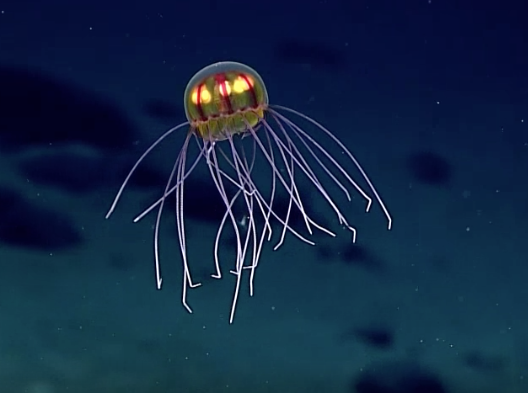Did you know some jellyfish glow?
It’s true! About 50% of jellyfish can produce light. This amazing ability is called “luminescence” or “bioluminescence.” Jellyfish use bioluminescence mainly to defend against predators. Comb jellies, for instance, produce bright flashes of light to startle their predators and give them time to escape. Other jellyfish can release a glowing tentacle as a decoy. Some even send thousands of glowing particles into the water to confuse their predator.
Jellyfish aren’t the only creatures that are bioluminescent. Squid, fish, bristle worms, krill, bacteria, and plankton are some other common organisms that can glow. Can you spot a pattern among these organisms?
There’s a big one: most bioluminescent creatures live in the ocean. In fact, 76% of all ocean animals are luminescent, and 90% of deep ocean animals are luminescent! The ocean, especially the deepest parts, is vast, dark, and doesn’t provide much refuge for animals to hide. For creatures in this daunting habitat, the ability to create light is a useful survival tool. Creatures use bioluminescence for many important activities like finding prey, evading predators, attracting mates, and communicating with each other.
How are these organisms able to produce light? It’s all due to energy released by specific chemical reactions. Often, the two types of chemicals that react are called luciferin and luciferase. The exact kind of luciferin and luciferase varies among organisms, which allows different organisms to produce different colors of light (blue and green light are the most common). In general, most reactions that produce light also produce a lot of heat, but bioluminescent reactions do not. Because of this, sometimes bioluminescence is called “cold light.”
But, with all of the amazing ways organisms use bioluminescence, it could be called “cool light,” too!
Glowing Jellyfish
Picture Source: nationalgeographic.com

